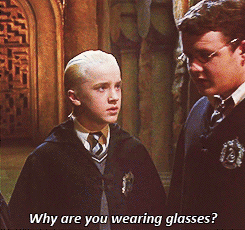That Moment… My Heart…

That Moment… My Heart…
(Photo Credit: Kenneth Jarecke/Contact Press Image)
More Posts from Smparticle2 and Others

DNA: The next hot material in photonics?
Scientists fine-tune organic thin films with an eye toward biomedical devices
Using DNA from salmon, researchers in South Korea hope to make better biomedical and other photonic devices based on organic thin films. Often used in cancer treatments and health monitoring, thin films have all the capabilities of silicon-based devices with the possible added advantage of being more compatible with living tissue.
A thin film is just what it sounds like, a layer of material only nanometers or micrometers thick that can be used to channel light. If the film is a dielectric – that is, an insulator such as glass – it can be used without worrying that it might conduct electricity.
“DNA is the most abundant organic material, and it is a transparent dielectric, comparable to silica,” said Kyunghwan “Ken” Oh, of the Photonic Device Physics Laboratory at Yonsei University, Seoul, South Korea. In the journal Optical Materials Express, from The Optical Society (OSA), Oh and his colleagues lay out their method for fabricating the thin films in a way that gives them fine control over the material’s optical and thermal properties.
As the basis for the silica glass that makes up optical fibers, silicon has long been a dominant material in inorganic photonic devices because it’s readily available and easy to work with from the materials perspective. Oh argues that DNA can play the same role in organic photonic devices because it can be found throughout the living world. It could, for instance, be used to make waveguides similar to silica fibers to carry light within the body. Organic devices should also be easy to manufacture, more flexible than silicon and environmentally friendly.
Read more.









On this day in 1996, then-World Chess Champion Garry Kasparov makes his first move in the sixth game against Deep Blue, IBM’s supercomputer. Kasparov emerged the victor, winning three games, drawing in two, and losing one.
via reddit

The winners of the Miss Perfect Posture contest at a chiropractors convention, USA, 1956
via reddit



:)

If you liked The Map of Physics animation, I bet you’ll like The Map of Mathematics too (also by Dominic Walliman):
h-t Open Culture
NSF’s Science360 Photo of the Week
This is a close-up view of the beam created by a vortex laser.

Because the laser beam travels in a corkscrew pattern, encoding information into different vortex twists, it’s able to carry 10 times or more the amount of information than that of conventional lasers. The optics advancement could become a central component of next-generation computers designed to handle society’s growing demand for information sharing. Image credit: Natalia Litchinitser, University at Buffalo
Like this photo? Sign up for NSF’s Science360 News Service at news.science360.gov for a daily dose of STEM radio, news, videos and more cool images like this.
The Science of Smog
On July 26, 1943, Los Angeles was blanketed by a thick gas that stung people’s eyes and blocked out the Sun. Panicked residents believed their city had been attacked using chemical warfare. But the cloud wasn’t an act of war. It was smog. A portmanteau of smoke and fog, the word smog was coined at the beginning of the 20th century to describe the thick gray haze that covered cities such as London, Glasgow, and Edinburgh.

This industrial smog was known to form when smoke from coal-burning home stoves and factories combined with moisture in the air. But the smog behind the LA panic was different. It was yellowish with a chemical odor. Since the city didn’t burn much coal, its cause would remain a mystery until a chemist named Arie Haagen-Smit identified two culprits, volatile organic compounds, or VOCs, and nitrous oxides. VOCs are compounds that easily become vapors and may contain elements, such as carbon, oxygen, hydrogen, chlorine, and sulfur. Some are naturally produced by plants and animals, but others come from manmade sources, like solvents, paints, glues, and petroleum. Meanwhile, the incomplete combustion of gas in motor vehicles releases nitrous oxide. That’s what gives this type of smog its yellowish color.

VOCs and nitrous oxide react with sunlight to produce secondary pollutants called PANs and tropospheric, or ground level, ozone. PANs and ozone cause eye irritation and damage lung tissue. Both are key ingredients in photochemical smog, which is what had been plaguing LA.
Smog isn’t just an aesthetic eyesore. The two forms of smog irritate the eyes, nose, and throat, exacerbate conditions like asthma and emphysema, and increase the risk of respiratory infections like bronchitis. Smog can be especially harmful to young children and older people and exposure in pregnant women has been linked to low birth weight and potential birth defects. Secondary pollutants found in photochemical smog can damage and weaken crops and decrease yield, making them more susceptible to insects.

After the Great Smog of London shut down all transportation in the city for days and caused more than 4,000 respiratory deaths, the Clean Air Act of 1956 banned burning coal in certain areas of the city, leading to a massive reduction in smog. Similarly, regulations on vehicle emissions and gas content in the US reduced the volatile compounds in the air and smog levels along with them.
Smog remains a major problem around the world. Countries like China and Poland that depend on coal for energy experience high levels of industrial smog. Photochemical smog and airborne particles from vehicle emissions affect many rapidly developing cities, from Mexico City and Santiago to New Delhi and Tehran. Governments have tried many methods to tackle it, such as banning cars from driving for days at a time. As more than half of the world’s population crowds into cities, considering a shift to mass transit and away from fossil fuels may allow us to breathe easier.
From the TED-Ed Lesson The science of smog - Kim Preshoff
Animation by Juan M. Urbina Studios
-
 teatrees2000 liked this · 1 year ago
teatrees2000 liked this · 1 year ago -
 honeybunny120 liked this · 3 years ago
honeybunny120 liked this · 3 years ago -
 aiag27 liked this · 4 years ago
aiag27 liked this · 4 years ago -
 auroramya reblogged this · 5 years ago
auroramya reblogged this · 5 years ago -
 firstzonkstatesmanmoney-blog liked this · 5 years ago
firstzonkstatesmanmoney-blog liked this · 5 years ago -
 crybabypp liked this · 5 years ago
crybabypp liked this · 5 years ago -
 russianglitter liked this · 6 years ago
russianglitter liked this · 6 years ago -
 paulpoirier reblogged this · 6 years ago
paulpoirier reblogged this · 6 years ago -
 usa20 liked this · 6 years ago
usa20 liked this · 6 years ago -
 cyberarbiterkitten-9c551c19 liked this · 7 years ago
cyberarbiterkitten-9c551c19 liked this · 7 years ago -
 angelfantxsy liked this · 7 years ago
angelfantxsy liked this · 7 years ago -
 tutyayilmazz reblogged this · 7 years ago
tutyayilmazz reblogged this · 7 years ago -
 theamandaisms liked this · 8 years ago
theamandaisms liked this · 8 years ago -
 princessofawinterdawn liked this · 8 years ago
princessofawinterdawn liked this · 8 years ago -
 melanie-djds liked this · 8 years ago
melanie-djds liked this · 8 years ago -
 artisticgymnasticsaesthetic-blog reblogged this · 8 years ago
artisticgymnasticsaesthetic-blog reblogged this · 8 years ago -
 mustasparkles liked this · 8 years ago
mustasparkles liked this · 8 years ago -
 ineedalotofhugs liked this · 8 years ago
ineedalotofhugs liked this · 8 years ago -
 tutyayilmazz liked this · 8 years ago
tutyayilmazz liked this · 8 years ago -
 myopiniontumbles reblogged this · 8 years ago
myopiniontumbles reblogged this · 8 years ago -
 gymgiants reblogged this · 8 years ago
gymgiants reblogged this · 8 years ago -
 teddybearchiq reblogged this · 8 years ago
teddybearchiq reblogged this · 8 years ago -
 teddybearchiq liked this · 8 years ago
teddybearchiq liked this · 8 years ago -
 bluish-hush reblogged this · 8 years ago
bluish-hush reblogged this · 8 years ago -
 jyosef reblogged this · 8 years ago
jyosef reblogged this · 8 years ago -
 leotees-blog liked this · 8 years ago
leotees-blog liked this · 8 years ago -
 edclenxh-blog liked this · 8 years ago
edclenxh-blog liked this · 8 years ago -
 doubledoubleblog-blog reblogged this · 8 years ago
doubledoubleblog-blog reblogged this · 8 years ago -
 atownlikecat reblogged this · 8 years ago
atownlikecat reblogged this · 8 years ago -
 irockbequiet reblogged this · 8 years ago
irockbequiet reblogged this · 8 years ago -
 irockbequiet liked this · 8 years ago
irockbequiet liked this · 8 years ago -
 switch-leaps-blog liked this · 8 years ago
switch-leaps-blog liked this · 8 years ago -
 fuckjameis reblogged this · 8 years ago
fuckjameis reblogged this · 8 years ago -
 anaporgras reblogged this · 8 years ago
anaporgras reblogged this · 8 years ago -
 sclaudia90 liked this · 8 years ago
sclaudia90 liked this · 8 years ago -
 blueberry-follows liked this · 8 years ago
blueberry-follows liked this · 8 years ago -
 baeliekey reblogged this · 8 years ago
baeliekey reblogged this · 8 years ago -
 star-shadows liked this · 8 years ago
star-shadows liked this · 8 years ago -
 leeteuksujusistarbora liked this · 8 years ago
leeteuksujusistarbora liked this · 8 years ago -
 anna--rodionova reblogged this · 8 years ago
anna--rodionova reblogged this · 8 years ago -
 switch-leaps-blog reblogged this · 8 years ago
switch-leaps-blog reblogged this · 8 years ago